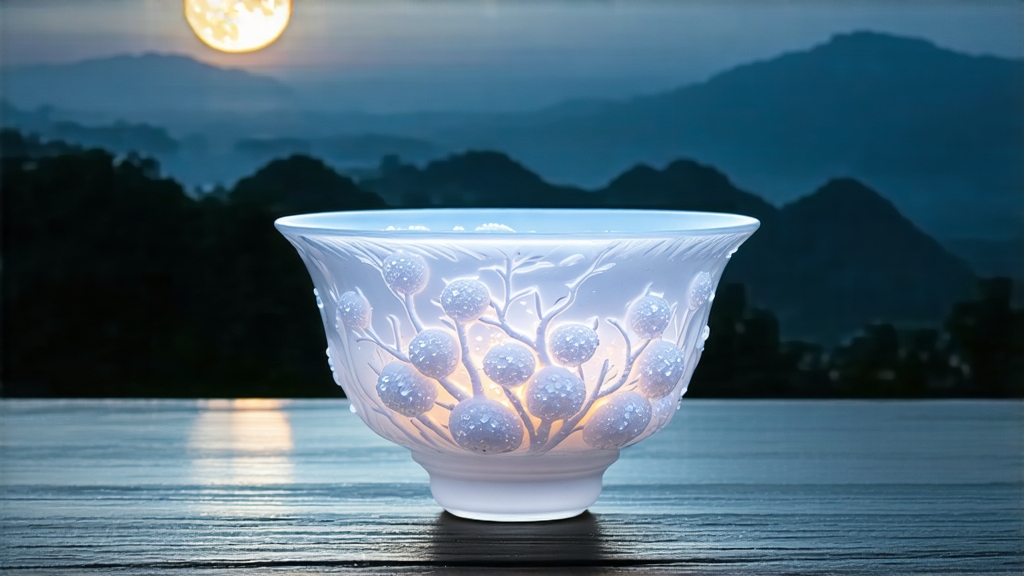
Among the six great families of Chinese tea, white tea is the least theatrical yet the most elusive; it is oxidised only by the passage of air, time and the whisper of the moon. Within that family, Bai Hao Yin Zhen—literally “Silver Needle White Down”—is the crown held closest to the sky. Pick any April dawn in Fuding or Zhenghe, Fujian, and you will meet it: a plantation of Da Bai tea trees whose fat, unopened buds wear a silvery fur so fine it looks like frost preserved in daylight. One pluck, one gentle wither, one slow bake, and the bud becomes a slender needle that can still remember the mountain mist from which it came.
History: from palace secret to global hush
Imperial annals first name-check “silver tips” during the Song dynasty (960-1279), but those cakes were green tea pressed with fragrant oils. True white tea as we now define it—no pan-fire, no rolling—appears in county gazettes of the late Ming. By the Qing, Fuding tributes travelled north in small red-pine boxes lined with rice paper; only the emperor’s cup saw the buds stand upright like miniature spears of jade. When the last dynasty fell, the technique almost vanished: farmers sold the buds cheap to perfumeries who wanted their soft hay scent. Revival arrived in 1963 with state-run export trials to Hong Kong and, later, to Germany’s emerging wellness market. Today Silver Needle is the quiet darling of specialty cafés from Melbourne to Montreal, yet its production remains so tiny that a single 500 g tin can represent the dawn pluck of three experienced pickers.
Micro-terroir: two counties, two personalities
Chinese law restricts the name Bai Hao Yin Zhen to buds harvested in Fuding and Zhenghe. The two districts sit only 150 km apart but speak different dialects of climate. Fuding’s coastal terraces trap maritime fog; the tea that results is lilac-sweet, with a finish of rock sugar. Zhenghe sits higher in the Wuyi foothills; cooler nights slow the wither, building amino acids that translate into peach skin and white sesame. Purists can blind-taste the difference: Fuding needles feel weightless, almost buoyant on the tongue, while Zhenghe versions carry a denser, brocade-like body. Both, however, must be picked before Qingming festival, when the bud is still closed like a secret and no leaf has dared to unfurl.
Craft: the art of doing almost nothing
Picking begins at 5 a.m. while dew is still a second skin. A practiced thumb and forefinger snap the bud without squeezing; any bruise will later rust into an off-putting red seam. By 9 a.m. the wicker baskets reach the withering loft—an attic whose windows are screened, not glazed, so the buds inhale mountain air scented by wild orchids and camphor. For 36 to 48 hours the buds lie on bamboo trays, turned every hour with the tenderness accorded to sleeping infants. Moisture drops from 75 % to 12 %, but enzymatic oxidation is allowed only to the edge of 8 %, a line so thin it demands intuition rather than instruments. Finally, charcoal bakers finish the tea at 40 °C, a temperature lower than a hot-spring footbath, using embers covered in ash so no smoke can kiss the buds. The entire process consumes five days of watching, waiting and refusing to hurry.
Grades & market names
Western vendors often label anything pale as “Silver Needle,” yet Chinese traders recognise three ascending grades:
• Imperial: 2.5–3 cm buds, 100 % intact tips, down so thick it powders the fingers.
• Grade A: 2 cm buds, max 5 % broken, still silver but slightly slimmer.
• Grade B: mixed buds and tiny leaves, sold domestically as “beauty tea” for face-steaming rather than drinking.
True Imperial lots are never vacuum-packed; the down would mat and lose loft. Instead they rest in food-grade foil pouches flushed with nitrogen, then slipped into cedar cylinders that breathe through microscopic gaps.
How to brew: listening to a whisper
Silver Needle is not a tea that shouts; it murmurs. Start with a glass g